ORIGIN OF THE SPECIES: THE 1970s
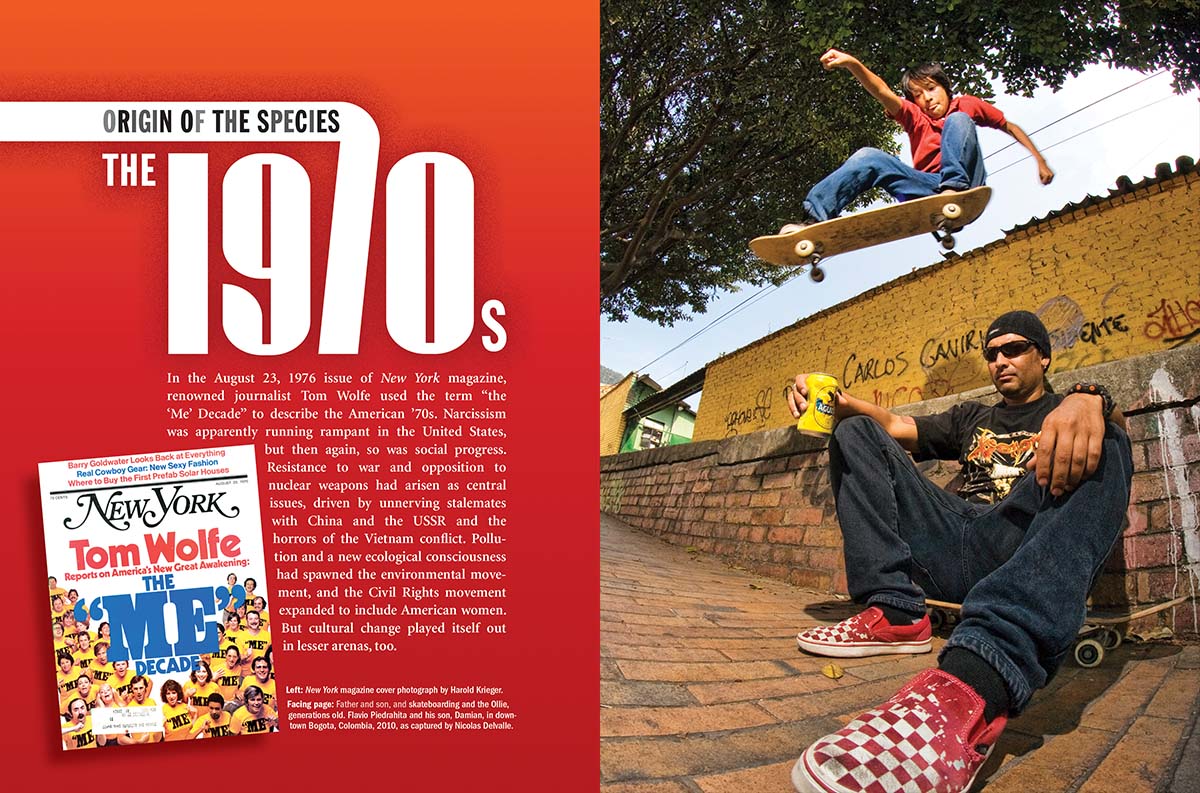
IN THE AUGUST 23, 1976 ISSUE of New York magazine, renowned journalist Tom Wolfe used the term “the ‘Me’ Decade” to describe the American ’70s. Narcissism was apparently running rampant in the United States, but then again, so was social progress. Resistance to war and opposition to nuclear weapons had arisen as central issues, driven by unnerving stalemates with China and the USSR and the horrors of the Vietnam conflict. Pollution and a new ecological consciousness had spawned the environmental movement, and the Civil Rights movement expanded to include American women. But cultural change played itself out in lesser arenas, too.
IN TERMS OF SKATEBOARDING, the 1970s were also a watershed period. No one could have anticipated what would unfold during this decade, or how fast this so-called sport would advance in just a few short years. Everything changed quickly; not just month to month, but week to week—although sometimes the newest technology wasn’t necessarily the best technology. The 1970s were a living experiment, a laboratory in which true innovation and harebrained ideas mingled freely. Language was also affected during this boom. “Radical,” for example, transitioned from being a word that described extremist sentiment to a nonpolitical term meaning innovation, extra special showmanship, or ability in certain skateboarding maneuvers, or tricks.
In the 1970s, in what may have been the most important decade in skateboarding’s history, the activity saw itself rise from infancy into a potent individualized art form, and as such, it became a great equalizer between the sexes—at least initially. As a creative form, it also reflected other changes that were taking place in the world at that time, such as the transition in art from modernism to postmodernism. Skateboarding contained the experimentation with materials and the need to create new things that was characteristic of modernism, but also saw the beginning of the capitalistic commodification and self-reference that marked the postmodernism movement of the late 20th century.
In the 1970s, in what may have been the most important decade in skateboarding’s history, the activity saw itself rise from infancy into a potent individualized art form, and as such, it became a great equalizer between the sexes—at least initially. As a creative form, it also reflected other changes that were taking place in the world at that time, such as the transition in art from modernism to postmodernism. Skateboarding contained the experimentation with materials and the need to create new things that was characteristic of modernism, but also saw the beginning of the capitalistic commodification and self-reference that marked the postmodernism movement of the late 20th century.
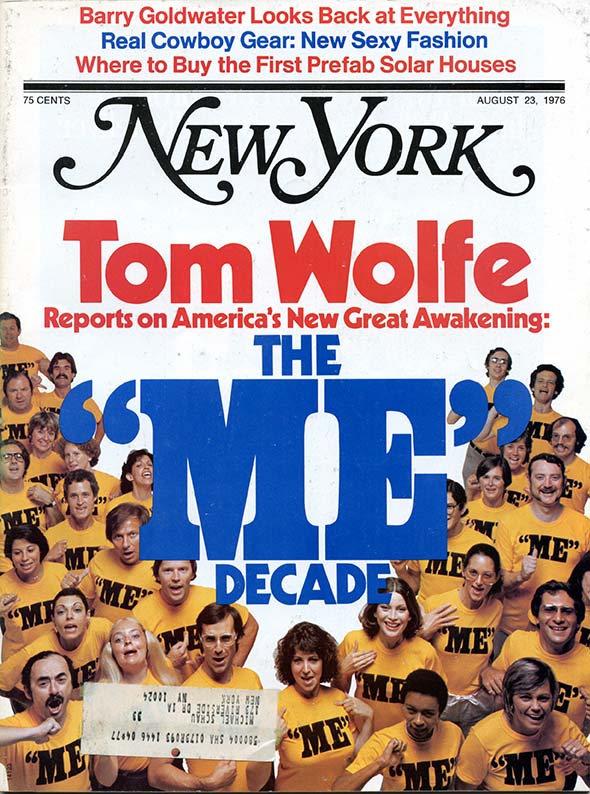
According to Wolfe, the Me Decade was characterized in part by a shift away from history and community. In skateboarding, it could be said that the opposite was true. Skaters embraced history by copying all that came before them and reinventing it. And while skateboarding was fundamentally a personal pursuit, sometimes centered around one person’s ego, skaters created their own community and culture, and collectively advanced skateboarding through thousands of individual contributions.
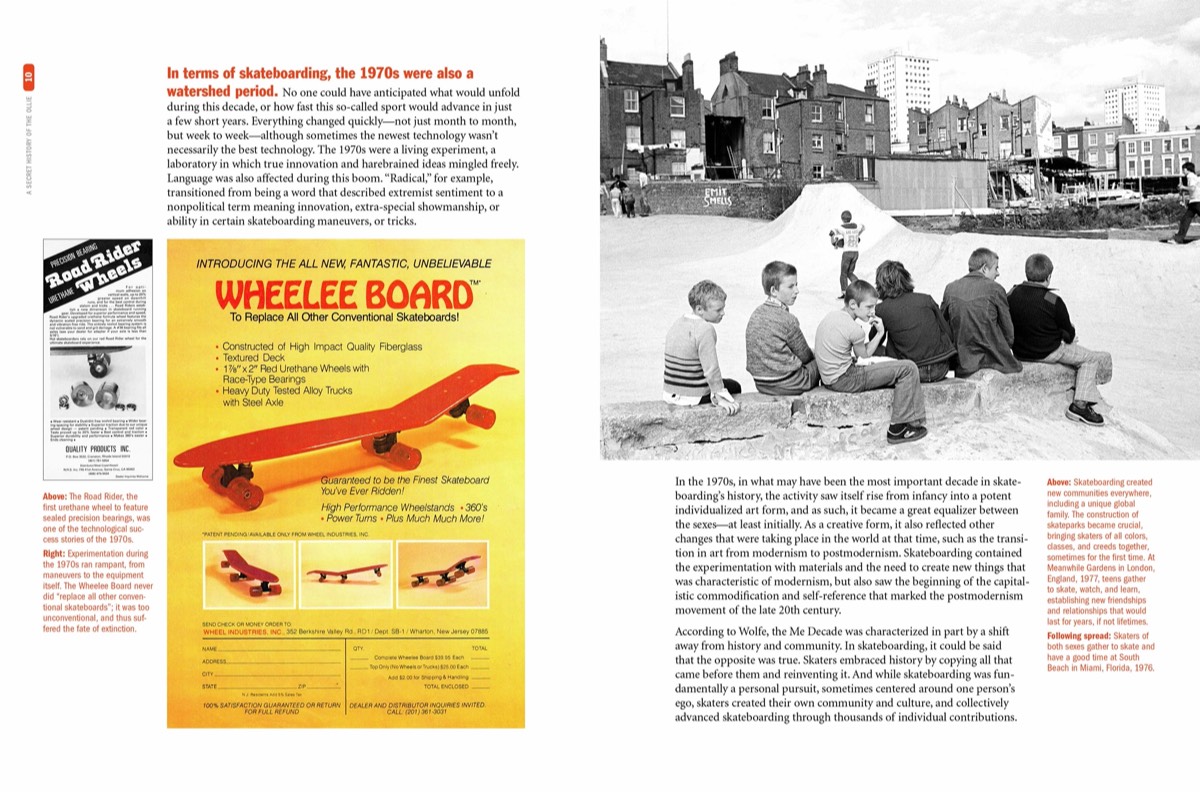
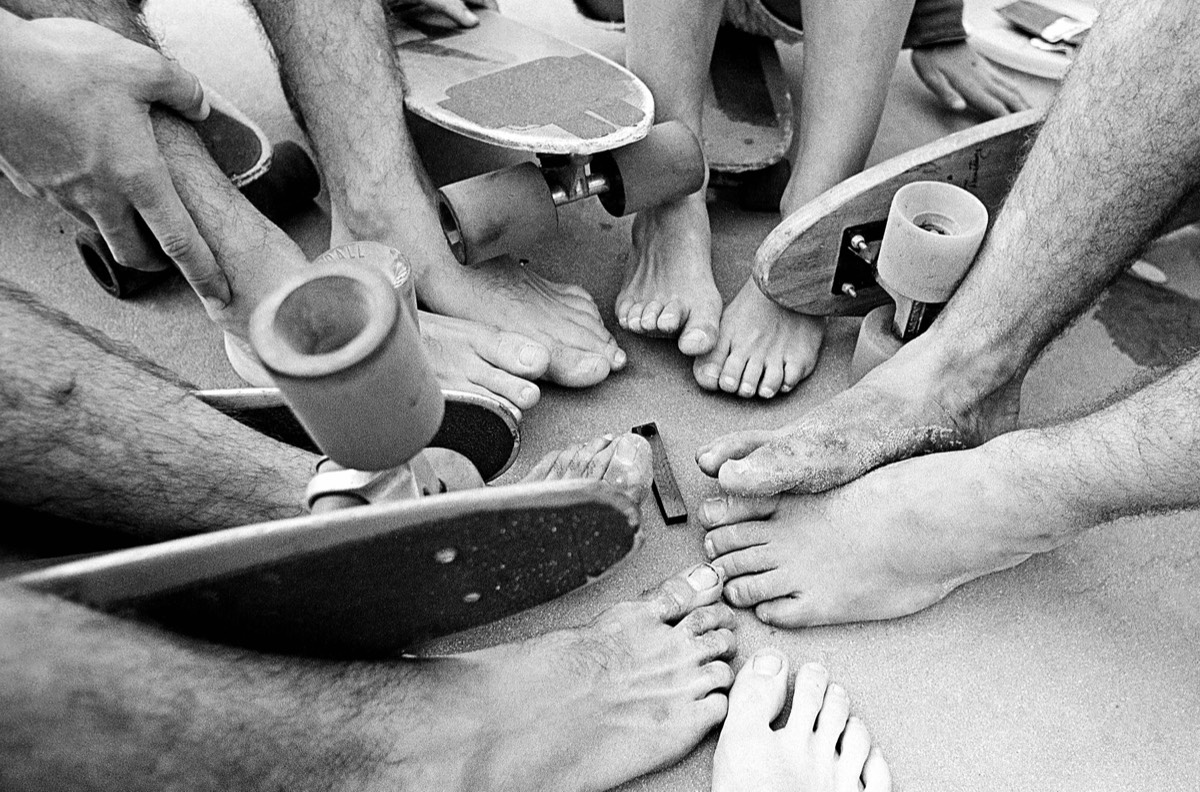
One of these contributions—the Ollie—stands apart from the rest. Created in 1978 in Hollywood, Florida, this unique maneuver lies at the root of nearly every significant move in street skating today. The Ollie allows a skateboarder to leap into the air above a slanted or vertical wall, or above flat ground almost as high as they can jump, while the board stays in contact with their feet—without the use of the rider’s hands or any external device. This controlled explosiveness effectively makes the skateboard an extension of the rider’s body, allowing rider and board to jump over or onto an obstacle in one continuous, athletic motion, to perform further acrobatic moves in midair, or both.
The Ollie’s creation so expanded the boundaries of possibility that the history of skateboarding can be divided into two distinct eras—pre-Ollie and post-Ollie. Yet riding styles and maneuvers are not the only things the Ollie has affected; it has also transformed what skaters ride and wear. Popular, contemporary deck design and shoes are two such things, their construction and features often directly influenced by this pervasive, ubiquitous maneuver. And the maneuver’s impact has expanded to surfing, snowboarding, and even lexicography: just prior to the beginning of the new millennium, the editors of the Oxford English Dictionary (OED) added the word “ollie” to their linguistic compendium.
The Ollie’s creation so expanded the boundaries of possibility that the history of skateboarding can be divided into two distinct eras—pre-Ollie and post-Ollie. Yet riding styles and maneuvers are not the only things the Ollie has affected; it has also transformed what skaters ride and wear. Popular, contemporary deck design and shoes are two such things, their construction and features often directly influenced by this pervasive, ubiquitous maneuver. And the maneuver’s impact has expanded to surfing, snowboarding, and even lexicography: just prior to the beginning of the new millennium, the editors of the Oxford English Dictionary (OED) added the word “ollie” to their linguistic compendium.
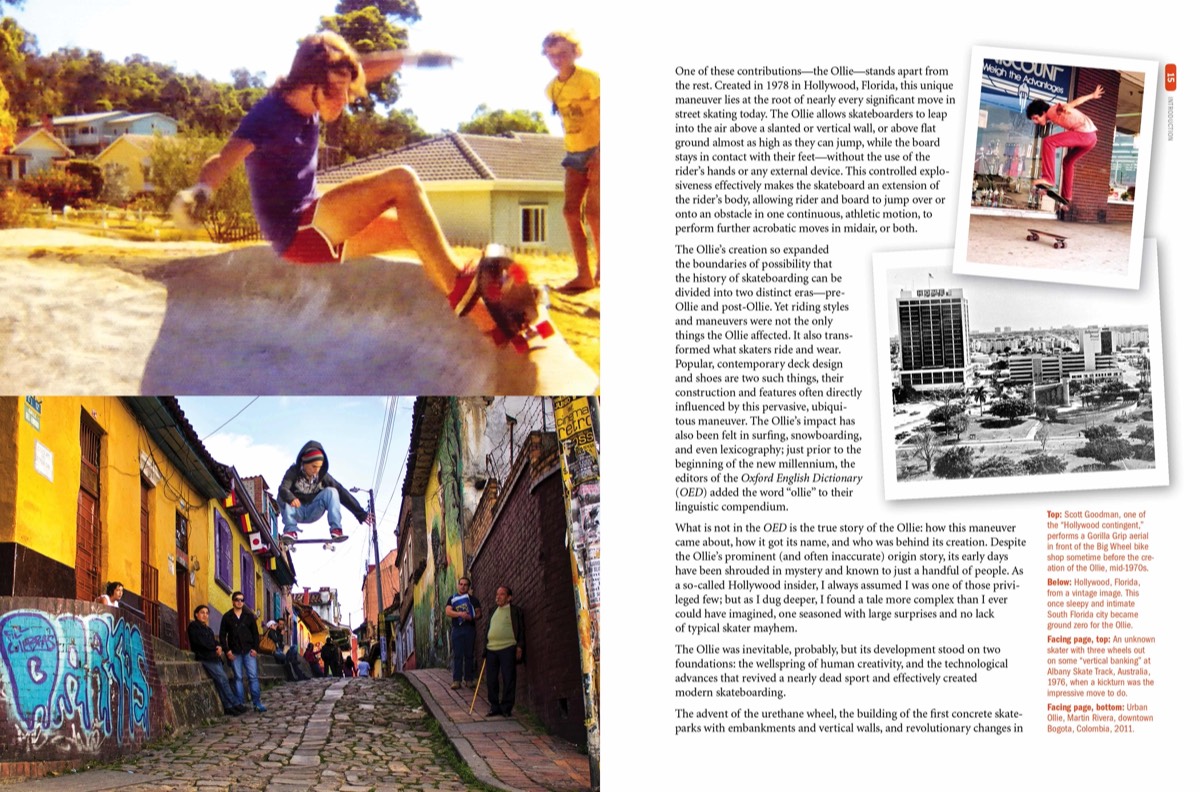
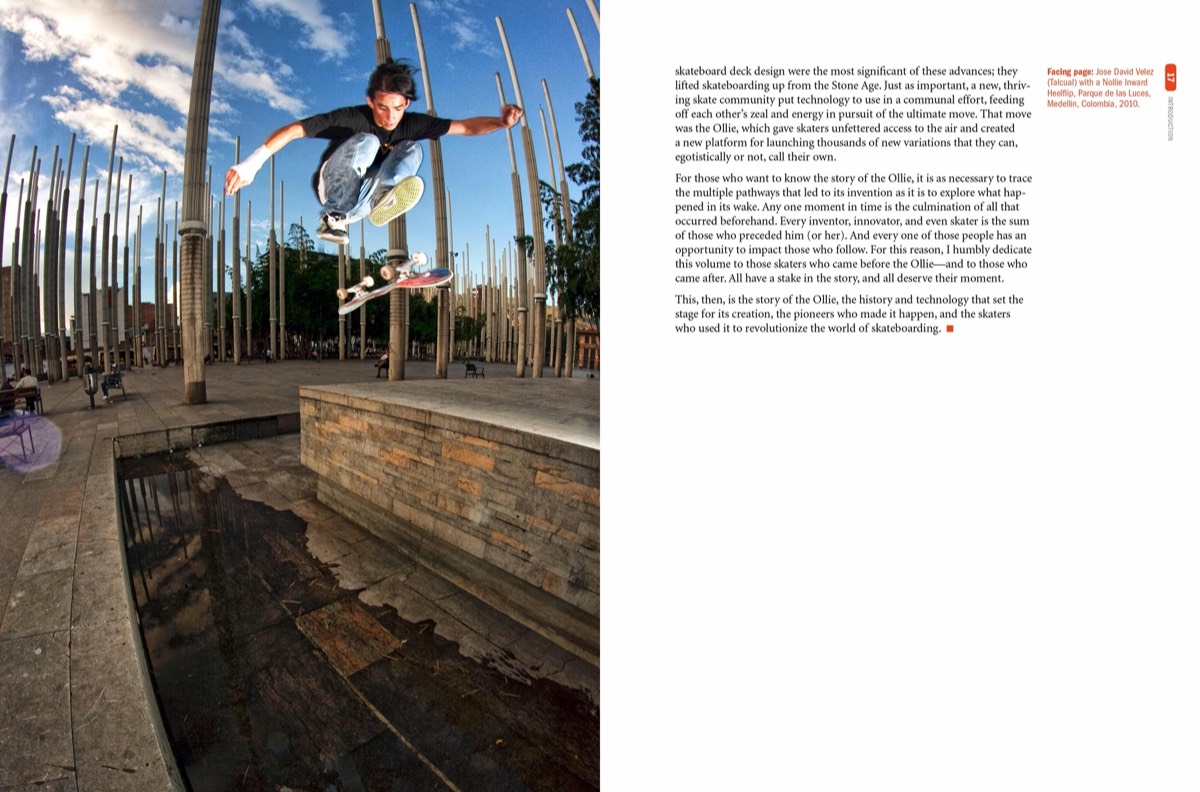
What is not in the OED is the true story of the Ollie: how this maneuver came about, how it got its name, and who was behind its creation. Despite the Ollie’s prominent (and often inaccurate) origin story, its early days have been shrouded in mystery and known to just a handful of people. As a so-called Hollywood insider, I always assumed I was one of those privileged few, but as I dug deeper I found a tale more complex than I could have ever imagined, one seasoned with some large surprises and no lack of typical skater mayhem.
The Ollie was inevitable, probably, but its development stood on two foundations: the wellspring of human creativity and the technological advances that revived a nearly dead sport and effectively created modern skateboarding.
The advent of the urethane wheel, the building of the first concrete skateparks with embankments and vertical walls, and some revolutionary changes in skateboard deck design were the most significant of these advances; they lifted skateboarding up from the Stone Age. Just as important, a new, thriving skate community put technology to use in a communal effort, feeding off each other’s zeal and energy in pursuit of the ultimate move. That move was the Ollie, which gave skaters access to the air and created a new platform for launching thousands of new variations that they can, egotistically or not, call their own.
For those who want to know the story of the Ollie, it is as necessary to trace the multiple pathways that led to its invention as it is to explore what happened in its wake. Any one moment in time is the culmination of all that occurred beforehand. Every inventor, innovator, and even skater is the sum of those who preceded them. And every one of these people has an opportunity to impact those who follow. For this reason, I humbly dedicate this volume to those skaters who came before the Ollie—and to those who came after. All have a stake in the story, and all deserve their moment.
This, then, is the story of the Ollie, the history and technology that set the stage for its creation, the pioneers who made it happen, and the skaters who used it to revolutionize the world of skateboarding. ◼︎
The Ollie was inevitable, probably, but its development stood on two foundations: the wellspring of human creativity and the technological advances that revived a nearly dead sport and effectively created modern skateboarding.
The advent of the urethane wheel, the building of the first concrete skateparks with embankments and vertical walls, and some revolutionary changes in skateboard deck design were the most significant of these advances; they lifted skateboarding up from the Stone Age. Just as important, a new, thriving skate community put technology to use in a communal effort, feeding off each other’s zeal and energy in pursuit of the ultimate move. That move was the Ollie, which gave skaters access to the air and created a new platform for launching thousands of new variations that they can, egotistically or not, call their own.
For those who want to know the story of the Ollie, it is as necessary to trace the multiple pathways that led to its invention as it is to explore what happened in its wake. Any one moment in time is the culmination of all that occurred beforehand. Every inventor, innovator, and even skater is the sum of those who preceded them. And every one of these people has an opportunity to impact those who follow. For this reason, I humbly dedicate this volume to those skaters who came before the Ollie—and to those who came after. All have a stake in the story, and all deserve their moment.
This, then, is the story of the Ollie, the history and technology that set the stage for its creation, the pioneers who made it happen, and the skaters who used it to revolutionize the world of skateboarding. ◼︎

A SECRET HISTORY OF THE OLLIE
VOLUME 1: THE 1970s • CRAIG B. SNYDER
BLACK SALT PRESS
Hardcover
912 pages
Language: English
ISBN-10: 1930287003
ISBN-13: 9781930287006
Dimensions: 9.3 x 7 x 2.2 inches
Shipping Weight: 4.7 pounds
Retail: $59.95
Printed in the U.S.A.
Hardcover
912 pages
Language: English
ISBN-10: 1930287003
ISBN-13: 9781930287006
Dimensions: 9.3 x 7 x 2.2 inches
Shipping Weight: 4.7 pounds
Retail: $59.95
Printed in the U.S.A.
AWARDS & RECOGNITION
• TOP 10 PHOTOBOOKS Mother Jones
• BEST IN GENERAL TRADE ILLUSTRATED 58th Annual New England Book Show, Boston
• GOLD MEDAL Foreword Reviews: Book of the Year Award in Sports
• GOLD MEDAL Independent Book Awards
• GOLD MEDAL FAPA President Book Awards
• BEST IN SPORTS Independent Press Awards, New York
• BEST IN SPORTS NYC Big Book Awards
• TOP 10 PHOTOBOOKS Mother Jones
• BEST IN GENERAL TRADE ILLUSTRATED 58th Annual New England Book Show, Boston
• GOLD MEDAL Foreword Reviews: Book of the Year Award in Sports
• GOLD MEDAL Independent Book Awards
• GOLD MEDAL FAPA President Book Awards
• BEST IN SPORTS Independent Press Awards, New York
• BEST IN SPORTS NYC Big Book Awards

